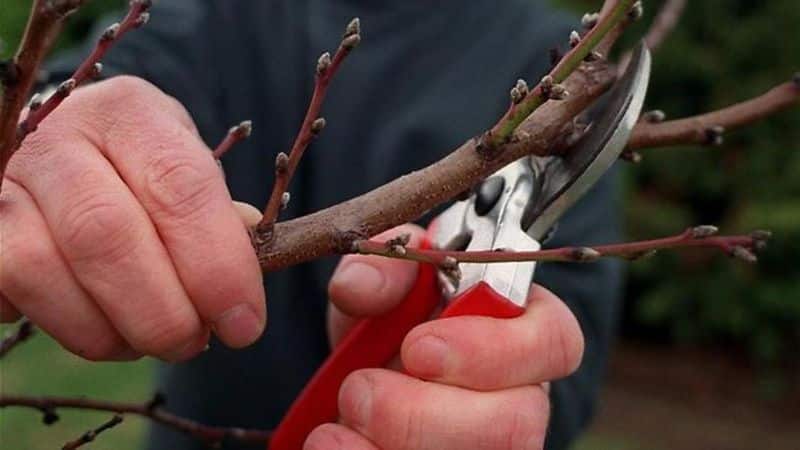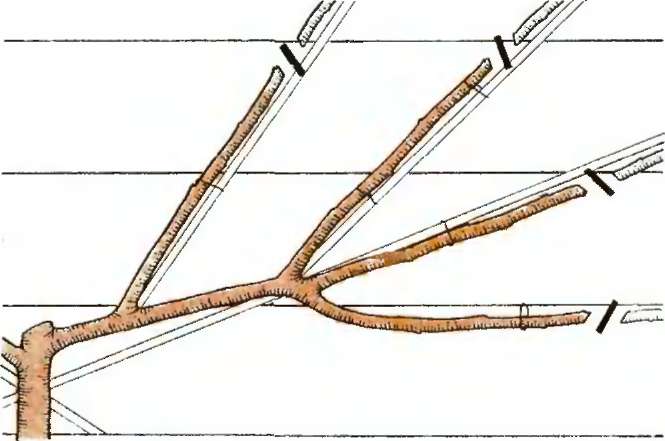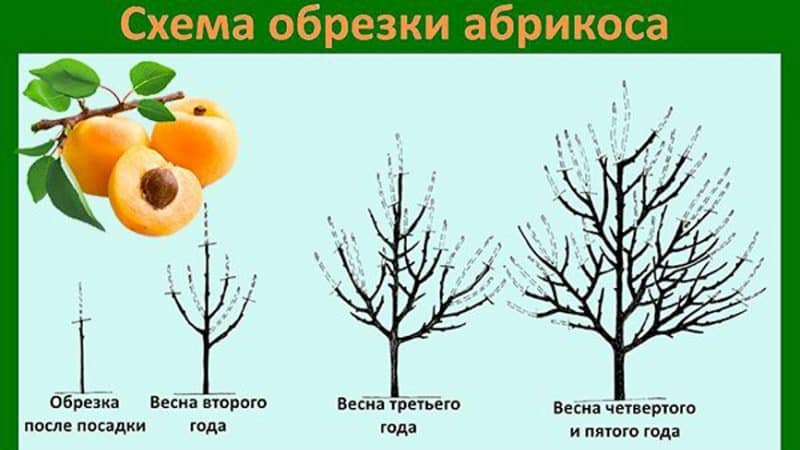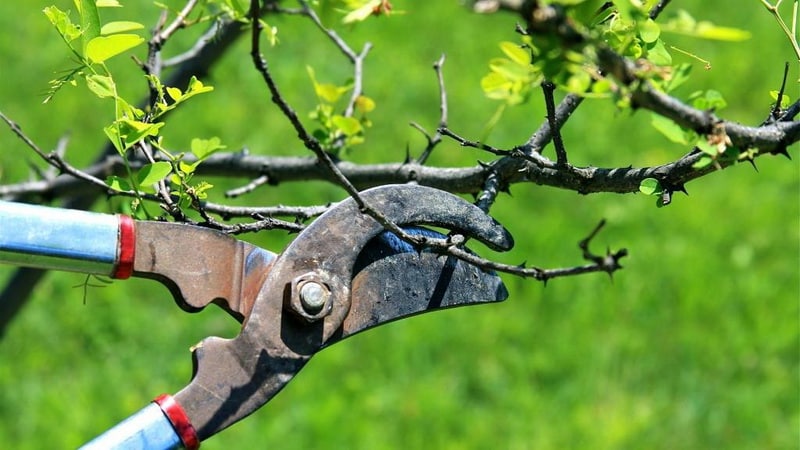How to properly prune an apricot in the fall and why it is needed
Apricot is a light-loving tree that grows actively and bears fruit abundantly only with sufficient sunlight. To get a stable harvest, you need to properly care for the crop. Pruning is one of the main components of care. With its help, excessive growth of branches is restrained and the number of fruits is regulated.
Read the article on how to properly prune an apricot tree.
Why prune apricots in the fall?
Autumn pruning of apricot forms the crown, increases yield and extends life. Due to excessively active growth of shoots and their thickening, the risk of disease increases, the tree dries out and may even die.

Pruning prepares the apricot for winter dormancy and allows it to gain strength for next year. Branches damaged during the season and non-viable are removed, a balance is established between fruitful and deciduous shoots.
What happens if you don't do it
The fruit crop is distinguished by abundant flowering and the appearance of many ovaries, the excess of which it is not able to get rid of on its own. If you do not control their number, it will damage the tree - the branches will break under the weight of so many fruits.
What happens if the procedure is neglected:
- A harmoniously developed crown will not form - the shoots will stick out in all directions.
- The growth of branches will be chaotic.
- New fruit shoots do not form - the yield will drop and the tree will quickly age.
- The fruits are crushed, their quality and taste will deteriorate.
Pruning is the foundation of tree health.
Types of pruning

There are three main types of autumn pruning: formative, rejuvenating and regulating. Each of them has its own unique purpose.
Formative
Gives the crown a harmonious shape, which allows all fruiting shoots to be evenly illuminated and receive sufficient nutrients. The procedure is performed from the first year of the tree’s life.
Regulatory
It is carried out on an adult tree when it is actively bearing fruit. The procedure maintains the shape of the crown and stimulates productivity.
All thickened branches are removed from the middle of the tree so that it is better illuminated by the sun. Excess young shoots are cut out on skeletal branches to avoid overload.
Rejuvenating
Mature apricot trees (over 6 years old) with insufficient care stop the growth of new shoots. But these trees have excellent regenerative ability. One rejuvenating procedure is enough to enhance the growth of branches.
Important! It is recommended to prune an old tree not at once, but gradually, over several years. Otherwise, the tree will weaken or even die.
Timing for pruning
Apricots are trimmed throughout their life. But this procedure is especially important in the first years of tree growth and development. A correctly formed crown in the early stages is easier to care for in the future.
After planting, the plant is shortened to a height of 1 m. Branches growing below 50 cm from the ground are removed to the base. The remaining ones should be at a distance of at least 20 cm from each other.
Branches are pruned before the onset of cold weather. All cuts must be tightened, otherwise the tree will get sick.
Important! In the autumn months, only early and middle varieties are pruned.
In order for the apricot to get stronger and prepare for winter, the optimal time for autumn pruning is from late September to mid-October.
How to prune an apricot in the fall
Autumn pruning has mainly restorative value. The tree is rid of old, unfruitful branches, dry and excess shoots are removed:
- When pruning, hold the pruning shears so that the lower part of the cut is at the base of the bud.
- Stumps should not remain - they will cause infection.
- Start thinning thickened branches from the middle of the crown.
- On trees older than 5 years, first remove diseased branches, and then remove abnormally growing ones.
In the fall, young branches that bear fruit in the summer are shortened by a third. If a similar procedure is carried out annually, they will consistently produce crops. The main thing is not the quantity of fruits, but their quality and the longevity of the tree.
Required materials and tools
To carry out the procedure you will need:
- pruner;
- lopper;
- garden knife;
- small hacksaw;
- whetstone for sharpening;
- twine to support shoots and branches;
- stepladder or ladder;
- means for processing cuts.
Garden tools are carefully sharpened and disinfected before work.
This is interesting:
Is it possible to trim the leaves of cucumbers and how to do it correctly.
Step-by-step instructions for planting cherry plum in the fall.
Scheme
Scheme on how to prune a mature apricot in the fall:
- Remove dry and thin branches growing inside the crown.
- Shorten skeletal branches that grow too quickly and stand out from the general mass.
- Remove leafy branches from fruiting shoots so that they do not hide the fruits, interfering with their ventilation and ripening.
- Trim the trunk to branch if it has reached the required height.
The crown of the apricot should be visible – the main thing is to prevent thickening; do not be afraid to remove a few extra branches. It is advisable that the upper tier is accessible to you from the stairs. It's good if you can reach any branch with your hands.

Trimming instructions
Gardeners use the following methods for pruning apricots: sparse tiered, improved tiered, flattened.
Algorithm for performing pruning using the sparse-tier method:
- In the first year after planting, remove the top ¼ of the trunk length.
- Leave a few shoots no more than 30 cm.
- In the second year, shorten a couple more shoots, maintaining a distance of 40 cm between them.
- In the third year, cut out half of the shoots on the central trunk.
As a result of pruning, the tree acquires a well-lit crown, which will allow you to obtain a high-quality harvest of large fruits.
Features of the procedure, depending on the region
The optimal period for the procedure in the climatic conditions of the regions:
- in the north - in September;
- in the middle zone - from October 5 to October 15;
- in the south - in November.
Cold and rainy autumn weather can weaken the tree, which will negatively affect its wintering. The procedure is carried out only at a temperature not lower than + 8°C, otherwise the plant will die.
Read also:
When and how to prune raspberries correctly in the fall.
Preserving the harvest correctly: how to trim carrots for winter storage.
Why do they prune onions when planting before winter and is it necessary to do so?
Tree care after pruning

After pruning, apricot needs care:
- Immediately seal the cuts with garden varnish or wood paint.
- Disinfect large surfaces of cuts with a solution of copper sulfate.
- Apply fertilizers to the tree trunk for better adaptation and restoration of the tree.
In addition to pruning, perform other care procedures: watering, mulching, protection from diseases and pests.
Important! On a large cut, the putty may collapse before the wound heals. In this case, apply garden varnish again. By sealing the cuts on time, you will protect the tree from disease and destruction.
Conclusion
Autumn pruning extends the life of the plant and increases yield. The optimal temperature for the procedure is above +8°C. If the cuttings are not tightened before the onset of cold weather, the plant will get sick and die.
For novice gardeners, pruning may seem like a difficult task, but by following the rules and following our tips, you will do it competently. The apricot tree will be healthy and will delight you with a rich harvest of sweet fruits.